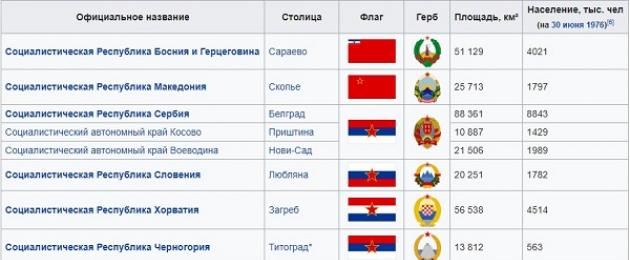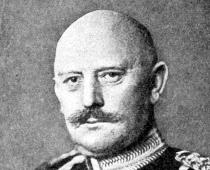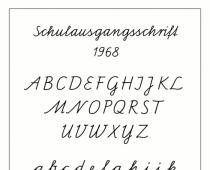Kingdom Yugoslavia was formed in 1918 as a union of Serbs, Croats and Slovenes after the end of the First World War. After World War II in 1945. Yugoslavia began to be called a socialist federation of six union republics and occupied an area of 255.8 thousand sq. km. and the capital Belgrade. Having existed for about 88 years, the state collapsed after 2006. no longer existed as a single state space.
The flag of Yugoslavia contained blue, white and red stripes, with a large five-pointed star in the foreground.
Step 2
So, Yugoslavia, a European state that existed on the Balkan Peninsula and had access to the Adriatic Sea, now consists of six independent states and two autonomous regions.
Today, the former Yugoslavia is the countries of Bosnia and Herzegovina, Macedonia, Serbia, which includes 2 autonomous regions of Vojvodina and Kosovo, Slovenia, Croatia, Montenegro.
Step 3
Bosnia and Herzegovina, capital of the state Sarajevo. The country's area is 51,129 thousand sq. km. The country has several official languages: Bosnian, Serbian, Croatian.
Sarajevo hosted the 1984 Winter Olympics, and then the city became a center of military operations during the Yugoslav civil war in 1992-1995.
Today the country is popular for its therapeutic balneological resorts, ski resorts and beach holidays, because... has a narrow outlet to the Adriatic Sea.
Step 4
Macedonia, capital of the state Skopje. This is an ancient city that dates back to the 3rd century BC. The area of the country is 25.7 thousand sq. km., official language– Macedonian. Macedonia is a mountainous country, almost the entire area is occupied by mountain ranges of varying heights. Macedonia does not have access to the sea, but on its territory there are several ski resorts and historical monuments associated with the Roman Empire and Turkish rule in this part of the Balkan Peninsula.
Macedonia
Step 5
Serbia, capital of the state Belgrade. The country's area is 88,361 thousand square kilometers, the official language is Serbian.
Belgrade arose in the first century AD, from 1284 it came under Serbian rule and today is its capital. Of all the countries of the former Yugoslavia, Serbia has the most flat fertile land and deciduous forests. There is no access to the Adriatic Sea, but there is an artificial Belgrade Sea. Also, rivers of extraordinary beauty flow through Serbia, on the mountainous part of which you can raft. The largest river in Serbia is the Danube.
Serbia also includes two autonomous provinces Kosovo, capital Pristina And Vojvodina, capital Novi Sad.
Serbia
Step 6
Slovenia, capital of the state Ljubljana. The country's area is 20,251 thousand square kilometers, the official language is Slovenian.
Slovenia is a small but very beautiful country. It has everything, snow-capped Alpine peaks, valleys with gardens and vineyards, and the Adriatic coast. Even the capital of Slovenia, Ljubljana, has an unusual history: according to legend, the city was founded by the Argonauts when they returned from Colchis after their journey for the Golden Fleece.
Slovenia today mainly lives on tourism, and also has a developed industry, including pharmaceuticals.
Slovenia.
Step 7
Croatia, capital of the state Zagreb. The country's area is 56,538 thousand square kilometers, the official language is Croatian. Zagreb is quite a large but cozy city with many architectural and historical attractions.
Croatia is a country that has the longest Adriatic coast of all the countries of the former Yugoslavia. That is why it is famous for its resorts around the cities of Split, Shebenik, Trogir, Dubrovnik. On the territory of Croatia there are unique nature reserves Krka, Paklenica, Kornati, etc. One of the cities of Croatia, Split is one of the oldest cities in Dolmatia (region of Croatia), its age exceeds 1700 years. In the center of the city of Split there is Diocletian's Palace, which now houses residential apartments for the city's residents.
One of the important crises of the last century was the collapse of Yugoslavia. Despite the fact that now there are no special claims on the part of this state, the crisis played a major role in the foreign policy situation that continues to this day.
Let's try to figure it out: what are the reasons for this event, how did it develop, the main positions of the participants in the crisis, how did the world map change after this “war”?
How many countries was Yugoslavia divided into? How did American intervention affect this process?
List of countries of the former Yugoslavia and their capitals
Yugoslavia (the current capital of the country is Belgrade) was part of Soviet Union as one of the republics - the SFRY.
Information about its member states and their capitals, areas and population is displayed in the table:

In addition, this territory was inhabited by people of different nationalities. The vast majority were Serbs. In addition to them, the population included Croats, Albanians, Montenegrins, Macedonians and Slovenes.
Reasons for the collapse of Yugoslavia
Why did the Balkan crisis happen?

The main factors that historians highlight:
- death of the first president ( former leader) Tito;
- the collapse of the USSR and the subsequent “wear and tear” of the socialist system;
- the flourishing of nationalism throughout the world.
As another prerequisite for the split, many scientists attribute incorrect domestic policy multinational state. According to the Constitution of Yugoslavia, at that time the authorities of the republics could create groups within their “possessions”.
The beginning of the collapse
This story began at the same time as the collapse of the USSR, in 1991. The date of complete collapse is considered to be 2006. What happened?

Started Civil War, during which 4 sovereign parts separated from Yugoslavia. Only Serbia and Montenegro remained, the rest became independent states.
Post-war time
It would seem that the conflict should end, the division of countries should come to naught. However, hostilities broke out due to an external factor.

Under the influence of NATO, major bloody military dramas occurred in Serbia and Croatia, in which more than 2 million people were injured. And only after the agreement signed in 1995, society recognized the secession of 4 republics from Yugoslavia.
Despite all the UN peacekeeping efforts, extremist uprisings of Albanians broke out at the end of the 20th century, which resulted in the death of another 0.5 million people.
The “Kosovo crisis” still remains an unresolved problem of the early 21st century.
Division of territory at the end of the 20th century
By the end of the 20th century, Yugoslavia was divided into 5 countries. But the financial division of property dragged on for quite a long period of time.

It was not until 2004 that an agreement was reached that specified the countries and the amounts prescribed to them. Moreover, a large amount went to Serbia (about 39% of total assets).
Many of our domestic historians believe that such a division is unfair, because the USSR had huge debts to foreign branches of Yugoslav companies. Therefore, in 2006 Russian Federation paid this amount.
Map of Yugoslavia: before and after the collapse
The first picture shows a map of Yugoslavia before it was divided into separate independent states.

The second picture shows a map of Yugoslavia with new states.

What countries did the country split into?
The five states into which Yugoslavia disintegrated by 2003 are:
- Croatia;
- Bosnia and Herzegovina;
- Slovenia;
- Macedonia;
- FRY (successor to the former multinational state):
- Slovenia;
- Montenegro.
Yugoslavia became finally divided when Montenegro left the FRY in June 2006.
American intervention
From the very beginning of the Balkan crisis, America actively intervened in this process. Her policy was aimed at forceful influence (on Serbia) and support for the two opposition parties. This led to the impossibility of peaceful resolution of the conflict.

In 1995, with the support of NATO, military operations were launched in Serbia and Croatia, during which over 1 million people were killed and about 2 million were injured.
At the end of the same year, on the initiative of American diplomats, an agreement was signed on the withdrawal of 4 countries from Yugoslavia and the cessation of hostilities throughout the territory of the former multinational state.
At the end of the twentieth century, America played important role in the “fight against extremists”, causing enormous damage with their numerous raids, which prompted Montenegro’s exit from the FRY.
NATO's intervention in the Kosovo crisis was of particular importance. Until now, this conflict remains unresolved.
Conclusion
Despite the difficult geopolitical situation, Russia is now pursuing diplomatic policy with the countries of the former Yugoslavia. In addition, technological progress is planned in almost all spheres of life of these independent states.
The city was divided into three parts: the Muslims dug in in the center, under the mosques, the Croats - on the outskirts, closer to their church, the Serbs broke through from the river. There were corpses lying all over the place. It was impossible to walk without stepping on someone's hand or foot; blood flooded the entire pavement. They killed women, children, and old people in a row simply because some were baptized and others prayed to Allah. Not a single intact building remained - they either burned or collapsed. The old bridge was blown up and fell into the water.
"We were swimming in blood"
Taxi driver Aziz takes me through Mostar, a city in Bosnia, on its streets in 1992-1995. former citizens of the former Yugoslavia fought for every block. Some of the houses have been restored (the “Gift of the European Union” signs have been screwed in), but those that are away from the tourist paths still bear traces of bullets and shrapnel on the walls. The bridge was also restored, and now it is like new. Aziz points to the window from where he shot his Croatian neighbor.But I didn't get it. He is more skilled and has a good machine gun. He wounded me in the shoulder.
Why did you shoot at him in the first place? Was the relationship bad?
Why? Great guy, we drank vodka together. It’s just, you know, we used to be Yugoslavs, and then somehow suddenly we started dividing the country. And yesterday's neighbor is the enemy. Believe it or not, I myself don’t understand why we suddenly grabbed knives to cut each other.
...Now Aziz drinks vodka in the evenings again - with the same neighbor who once successfully put a bullet in him. Both try not to remember the past. It should be noted that in the former Yugoslavia they generally do not like to talk about the war. Not a single person could clearly explain to me the reason why he went to kill his neighbors, friends, acquaintances who always lived next to him, side by side. Muslims against Serbs and Croats. Croats against Serbs and Muslims. Serbs against everyone. “We were swimming in blood and couldn’t stop,” the Croatian tells me Stanko Milanovic. “It was mass madness - we devoured human flesh like zombies.” During the fighting in ex-Yugoslavia, 250 thousand people died (out of a population of 20 million), 4 million fled abroad. The ex-capital Belgrade (along with dozens of other cities) was bombed by NATO aircraft, and Yugoslavia disintegrated into ten states: six “official” and four not recognized by anyone. A handful of weak dwarf countries are all that remains of a powerful power that fought against Hitler, who was not afraid to quarrel with Stalin and possessed an army of 600 thousand. Its greatness has turned to dust: some republics survive on beach tourism, others are begging and asking for money from the West, and NATO troops are comfortably stationed on the territory of Bosnia, Serbia and Macedonia.
"Russian? Get out from here!"
We were all running somewhere, he recalls. Maria Kraljic, owner of a cafe in the Bosnian city of Trebinje. - I lived in Dubrovnik, Croatia, and our house was set on fire. My husband and I jumped out the window - he was in shorts, I was in a dressing gown. They wanted to kill us just because we were Serbs. Now we are hiding here and it is clear that we will never return home again.
In Trebinje itself, the old center with Ottoman mosques is empty - the Serbs expelled Muslim residents from the city. Dubrovnik, where Maria fled, is now a luxurious seaside resort, with hotel prices higher than in Moscow. On the outskirts, far from tourists, lurk empty Serbian churches - smoked by fire, with broken windows, painted with graffiti. As soon as you point the camera, well-wishers appear: “Russian? It was you who supported the Serbs. Get out of here while you're still alive! This is still not bad - in Kosovo Orthodox churches they just explode. In the capital of Bosnia, Sarajevo, when in 1995 the city was divided into two parts, Serbian and Muslim, the Serbs went to “their” side, even taking the coffins of their fathers and grandfathers from cemeteries so that their bones would not be desecrated by infidels. The war ended, and the neighbors, who overnight became enemies, made peace with difficulty, but did not forgive each other for the massacre. Hell, where the flames have gone out, still remains hell... even if it is cool there now.
Can you tell me how to get to Bill Clinton Boulevard?
Yes, it’s in the very center...see that idol over there? Monument to a former lover Monica Lewinsky It's hard to miss in Pristina. Albanian separatists in Kosovo are extremely grateful to the US President for the decision to bomb Yugoslavia in the spring of 1999. Two million Serbs fled to the north of the republic and are huddled there in shabby houses. Walking down the street, we talk with the Montenegrin driver in a whisper: for speaking Serbian in Kosovo they can kill you - just like that, for no reason. The owner of the hotel in Pec looks at my passport with a double-headed eagle (the same one on the coat of arms of Serbia) and quietly says: “Even if you were the devil himself, I need guests. Move in, just don’t say anywhere that you’re Russian.”
...Perhaps the only thing that now unites the inhabitants of a country torn to shreds is a passionate love for its founder Marshal Josip Broz Tito. “We will never live as cool as we lived under Tito,” sighs the Albanian Hasan, driving me to the Serbian border guards checkpoint. “You never dreamed of this in the Soviet Union,” echoes the Bosnian Jasko. “It was a real paradise: shops are full of food, you can travel to Germany and France without a visa, there is almost no crime.” “In Europe we were respected, but now they consider us to be poor relatives,” the Croatian spits Stephen. - Tito was great person" According to polls, if the leader of Yugoslavia, who died in 1980, wished to become the head of state now, 65 (!) percent of the population would vote for him. But the dead are prohibited from running for president - and the country itself is already dead...
“The scenario for the collapse of Yugoslavia was also prepared for the USSR, and is now being planned for Russia.”
The collapse of the Austro-Hungarian Empire was a major geopolitical event that occurred as a result of growing internal social contradictions and the isolation of different parts of the empire. First World War, crop failure of 1918 and economic crisis... ... Wikipedia
The collapse of the Austro-Hungarian Empire was a major political event that occurred as a result of growing internal social contradictions and the balkanization of the empire. The First World War, the crop failure of 1918 and the economic crisis served as the reason for... ... Wikipedia
Declaration of independence: July 2, 1990 Republic of Illyriad June 25, 1991 Slovenia June 25, 1991 Croatia September 8 ... Wikipedia
- ... Wikipedia
Below is a list of people indicted by the ICTY (The Hague Tribunal) for war crimes: This list consists of 155 ICTY indictees. Contents 1 Republic of Serbian Krajina 2 Serbs ... Wikipedia
The death of Soviet journalists in Yugoslavia on September 1, 1991, the tragedy in Kostajnica, an episode of the Croatian War (see Collapse of Yugoslavia) between Serbia and Croatia, which caused a strong public outcry in the USSR, is still not officially ... ... Wikipedia
This article should be Wikified. Please format it according to the rules for formatting articles... Wikipedia
Kosovo War ... Wikipedia
Check neutrality. There should be details on the talk page... Wikipedia
NATO military operations on the territory of Yugoslavia (1999) Kosovo War Bombing of Yugoslavia Date March 24 - June 10, 1999 ... Wikipedia
Books
- Gloom, Vulin A.. The story “Gloom” by the famous Serbian politician Alexander Vulin is an example of a highly social work, in which history is examined through the prism of simple human destinies...
- Gloom (ed. 2016), Vulin A.. The story “Gloom” by the famous Serbian politician Alexander Vulin is an example of a highly social work, in which history is examined through the prism of simple human destinies...
The largest South Slavic state, Yugoslavia, ceased to exist in the 90s of the last century. Now at school while studying new history Children are told about which countries Yugoslavia broke up into. `
Each of them today carries its own culture and history, one of the important pages of which is its entry into the once flourishing major power, part of the powerful Socialist camp, with which the whole world reckoned.
The year of birth of the European state, located on the Balkan Peninsula, is 1918. Initially, it was called in the abbreviated version KSHS, which means the Kingdom of Serbs, Croats and Slovenes. The prerequisite for the formation of a new territorial unit was the collapse of Austria-Hungary. The new power united 7 small territories:
- Bosnia.
- Herzegovina.
- Dalmatia.
The political situation in the hastily created country could hardly be called stable. In 1929 there was a coup d'etat. As a result of this event, the KSHS changed its long name and became known as the Kingdom of Yugoslavia (KY).
This is not to say that there were no disagreements at all. Small conflicts broke out from time to time. None of them led to serious consequences. Many grievances were associated with the slow development of the state, whose government lacked economic and political experience.
Beginning of disagreement
Attention is not often focused on this, but the beginning of disagreements between previously united peoples began during the Great Patriotic War. Patriotic War. The fascist leadership adhered to a dishonest leadership principle based on the ancient Roman dogma of “divide and conquer.”
The emphasis was placed on national differences, which was successful. Croats, for example, supported the Nazis. Their compatriots had to wage war not only with the occupiers, but also with their fellow countrymen who helped them.
During the war the country was divided into pieces. Montenegro, Serbia, and the Croatian state appeared. Another part of the territories fell under the annexation of the Third Reich and the Nazis. It was during this period that cases of cruel genocide were noted, which could not but affect subsequent relations between peoples already in peacetime.
Post-war history
The torn parts of the state were reunited after the victory. The previous list of participants has been restored. The same 7 ethnic territories became part of Yugoslavia.
Within the country, its new government drew borders in such a way that there was no correspondence to the ethnic distribution of peoples. This was done in the hope of avoiding disagreements, which were not difficult to predict after what happened during the war.
The policies undertaken by the Yugoslav government have yielded positive results. In fact, relative order reigned on the territory of the state. But it was precisely this division, undertaken after the war with the Nazis, that later played a cruel joke and partially influenced the subsequent collapse of a large state unit.
Division of the country at the end of the 20th century
In the fall of 1991, President Josip Broz Tito died. It is believed that this event served as a signal for nationalists of various ethnic groups to start conflicts with their neighbors.
Josip Broz Tito-Yugoslav revolutionary and political activist
After the collapse of the USSR, a series of falls of socialist regimes began around the world. At this time, Yugoslavia was gripped by a deep economic crisis. Nationalist parties ruled throughout the territory, each pursuing an unfair policy towards its recent brothers. So in Croatia, where a large number of Serbs lived, the Serbian language was banned. The leaders of the nationalist movement began persecuting Serbian cultural figures. It was a challenge that could not but lead to conflict.
The beginning terrible war It is considered the “Day of Wrath” when, during a game at the Maksimir stadium, fans of the Serbian and Croatian sides fought. As a result, after several weeks, a new independent state– Slovenia. Its capital was a city with the romantic name Ljubljana.
Other republics that were part of a large state are also beginning preparations for withdrawal. At this time, disagreements and military skirmishes continue with mass casualties and threats of serious hostilities.
city and lake of the same name Orchid, Macedonia
The next on the list of retiring republics was. The role of its capital was taken over by the city of Skopje. Immediately after Macedonia, the experience is repeated by Bosnia (Sarajevo), Herzegovina and Croatia (Zagreb). Only the union between Serbia and Montenegro remained unshakable. They entered into a new agreement, which remained legal until 2006.
The division of the once large state into small pieces did not produce the expected results. Conflicts within disparate territories continued. Interethnic strife, based on blood grievances dating back to the 40s of the last century, could not subside so quickly.
- In contact with 0
- Google+ 0
- OK 0
- Facebook 0








